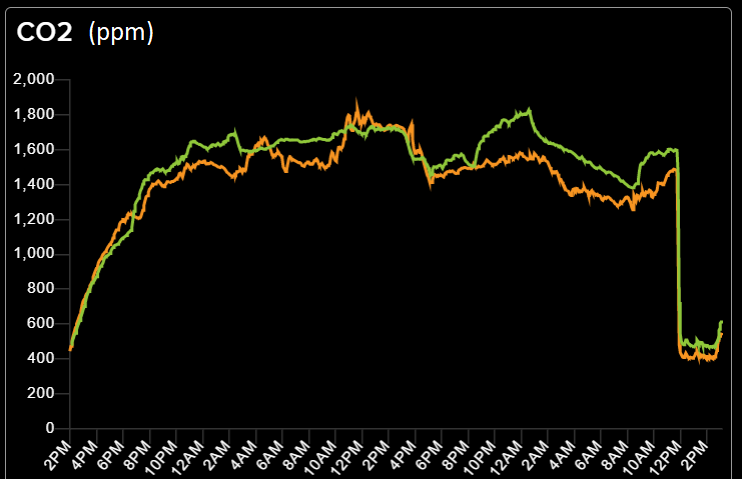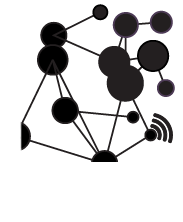Introduction
Although monitoring indoor CO2 levels has a long track record in regulating ventilation in Heating Ventilation and Air Conditioning (HVAC) systems, it became highly topical during the COVID-19 pandemic. Humans (and mammals in general) exhale CO2 as part of the respiratory process. In indoor environments the absolute CO2 levels reflect a balance between the rate of CO2 generated by occupants (in the absence of other CO2 sources) and the rate of exchange of indoor air with outside air (ventilation rate). Under steady state conditions (constant CO2 generation and ventilation rates), an equilibrium level of CO2 will be reached. For a given ventilation rate, the greater the CO2 generation rate (number of occupants), the greater the equilibrium CO2 level. The CO2 concentration can be viewed as the fraction of ‘rebreathed air’ – hence its importance in relation to airborne disease transmission. As a very loose rule of thumb, it is desirable to keep indoor CO2 levels below 1000 ppm.
Different Types of CO2 Sensors
Semiconductor – equivalent CO2
A semiconductor sensor, such as the SparkFun ENS160 Indoor Air Quality Sensor, relies on the fact that, in addition to CO2, mammals also exhale small quantities of volatile organic compounds (VOCs) and Hydrogen. By measuring concentrations of VOCs and/or Hydrogen in the air, the sensor can use their values as a proxy for exhaled CO2 on the assumption that the concentrations of VOCs/Hydrogen measured are solely a result of respiration. This type of sensor is cheap and compact and can work well in some circumstances for monitoring indoor CO2 levels. However, if other non-respiratory sources of VOCs/Hydrogen are present in the local space, then misleading results will be obtained. For example, cracking open a can of beer will elevate local VOC/Hydrogen levels, as will lathering on hand sanitiser.
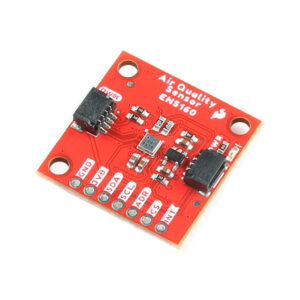
Figure 1. Spark Fun ENS160 air quality sensor including equivalent CO2 (CC BY 2.0)
NDIR – actual CO2
A better solution for measuring actual CO2 levels (rather than equivalent CO2 levels) is to use a Non-Dispersive Infra-Red (NDIR) CO2 sensor. This type of sensor relies on the fact that gaseous CO2 has a strong optical absorption band in the infrared spectrum. The sensor package consists of an infrared light source and a narrow-band optical filter tuned to the CO2 absorption band along with a photodiode detector. As the concentration of CO2 increases, so does the absorption of the infrared light source, leading to a reduction in the amount of infrared light which reaches the photodiode. Calibration of the photodiode signal allows a direct estimate of actual CO2 levels.
A few examples include the following:
Telaire T6713 CO2 Sensor
The Telaire T6713 CO2 sensor features automatic calibration, provided the sensor is exposed to ambient outdoor CO2 levels (400 ppm) once a week. Automatic background calibration is convenient for environments that regularly decay to ambient CO2 levels, such as office spaces that are unoccupied outside of office hours, but may not be suitable for domestic environments unless measures are taken ensure ambient CO2 levels are achieved at least once a week (e.g. by opening windows). Interfacing to the sensor is over I2C or UART. It retails for £80 – £90 depending on supplier.

Figure 2. Telaire T6713 CO2 Sensor
Sensirion SCD30
This sensor supports automatic calibration as well as single-point calibration when exposed to ambient CO2 levels. The single-point calibration feature makes this sensor useful for sensing environments that don’t regularly decay to ambient. It is often sold as a breakout board incorporating additional temperature and humidity sensors. Interfacing to the sensor is over I2C. It retails for around £80 depending on supplier.
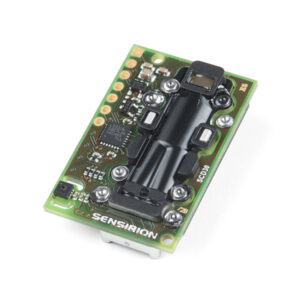
Figure 3. Sensirion SCD30 CO2 Sensor (CC BY 2.0)
Off-the-Shelf Solutions
There are a variety of off-the-shelf solutions often incorporating multiple sensors. One popular solution is the Aranet4 CO2 monitor. This battery powered device employs an NDIR sensor and also reports temperature, humidity and barometric pressure. It supports automatic calibration or single-point calibration (recommended) at ambient CO2 levels. Due to its small and lightweight size, it is easy to calibrate the device in outdoor air using the accompanying mobile app. It retails for £150 – £170 depending on supplier.
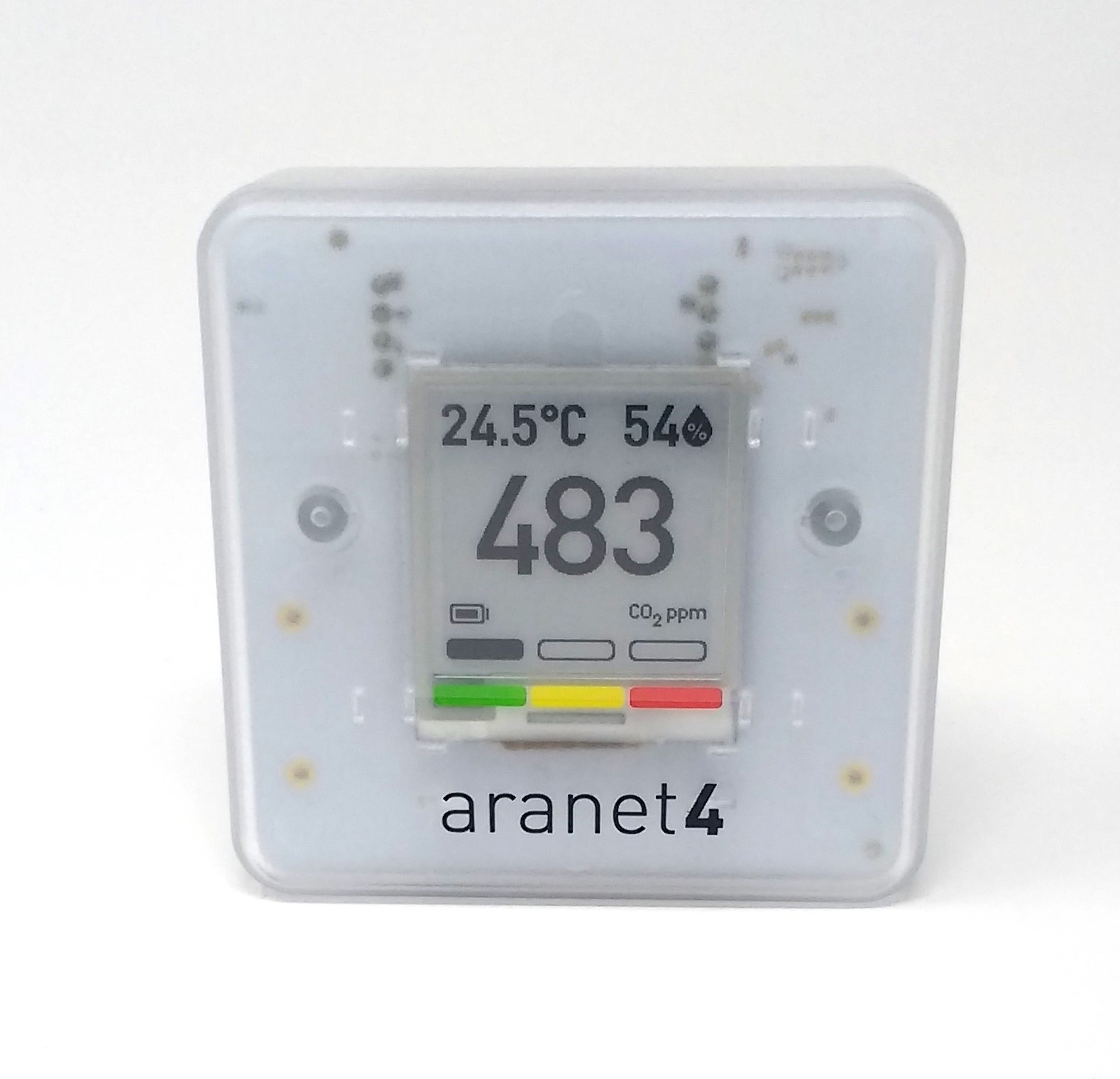
Figure 4. Aranet 4 CO2 sensor
Summary
There are a variety of solutions available for measuring indoor CO2 at various price points. Cheap semiconductor equivalent CO2 sensors may provide a satisfactory option but are subject to artefacts particularly in environments where exposure to alcohol containing products is likely. For serious studies of indoor CO2, NDIR-type sensors are recommended.
